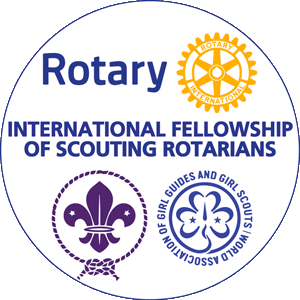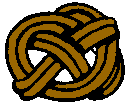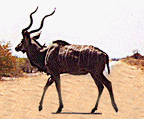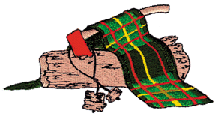


What is Wood Badge For
The 21st Century
In
1911, Baden-Powell took the first steps in training Scouting's
adult leaders by organizing a series of lectures for Scouters.
He made great strides in the years that followed, culminating
in 1919 with the establishment of Wood Badge training. Wood Badge
recipients now number more than 100,000 and can be found in all
corners of the world.
- Wood
Badge is the advanced leadership and team-building training for
adult leaders.
- It
teaches skills that are useful in Scouting and elsewhere
- The
program is for Cub Scout, Boy Scout, Varsity Scout and Venture
leaders as well as council and district leaders.
- Wood
Badge for the 21st Century focuses on leadership, not outdoor
skills.
The
21st Century Wood Badge course brings together leaders from all
areas of Scouting - Cub Scouts, Boy Scouts, Varsity Scouts, Venturing,
and all levels of BSA's professional staff. Reflecting the best
of nearly a century of Scouting experience, 21st Century Wood
Badge also draws upon the most current leadership models being
used by corporate America, academic circles, and successful outdoor
leadership organizations throughout the country.
The
Wood Badge course is designed to represent a month in the life
of a Scout unit, with participants entering as Cub Scouts, then
bridging into Boy Scouting to form patrols for the remainder of
the program. Selected staff members will interact with participants
as a Venturing crew. Participants will take part in numerous
presentations,discussions, and activities that explore and advance
a wide range of leadership philosophies and tools. In addition
to all the opportunities for learning at a Wood Badge course,
participants will find a tremendous amount of fellowship, a keen
sense of accomplishment, and plenty of fun. 21st Century Wood
Badge should:
- Enhance
leaders ability to train other leaders who can effectively lead
their groups.
- Increase
the number of units using small and large group models best defined
by the patrol method.
- Increase
the efficiency and effectiveness with which units operate.
- Leaders
will be more effective working with large units comprised of
many dens/patrols/adults giving more individuals the opportunity
to lead.
- Improve
retention of adult leaders through increased personal satisfaction
and fulfillment.
 Themes
of Wood Badge For The 21st Century Themes
of Wood Badge For The 21st Century
Wood Badge has five Central Themes:
The
themes that follow encapsulate the course content of Wood Badge
for the Twenty-First Century.
- 1) Living the Values
- Values,
mission, and vision
- Aims
and methods
- 2) Bringing the Vision to Life
- Listening
to learn
- Communicating
- Giving
and receiving feedback
- Valuing
people and leveraging diversity
- Coaching
and mentoring
- 3) Models for Success
- Team
development model
- Situational
Leadership
- 4) Tools of the Trade
- Project
planning and problem solving
- Managing
conflict
- Assessing
team performance
- Managing
change
- Celebrating
team success
- 5) Leading to Make a Difference
- Leaving
a legacy
- Learning
the greatest leadership secret
The
Objectives of Wood Badge
Wood Badge has four specific objectives:
- As
a result of attending Wood Badge, participants will be able to:
- View
Scouting globally, as a family of interrelated, values-based
programs that provide age-appropriate activities for youth.
- Recognize the contemporary leadership
concepts utilized in corporate America and leading government
organizations that are relevant to our values-based movement.
- Apply
the skills they learn from their participation as a member of
a successful working team.
- Revitalize their commitment by sharing in an overall inspirational
experience that helps provide Scouting with the leadership it
needs to accomplish its mission on an ongoing basis.
[return to top] [return
to index]
Wood Badge Course Format
How is Wood Badge Presented?
Wood Badge consists of two phases. The first is the practical
phase. This consists of two full weekends at camp plus two midweek
patrol meetings between the weekends. The second, or application
phase, occurs after the weekends and consists of "working
your ticket".
Wood Badge Ticket

As part of the practical course you create a plan to put the
leadership skills in action, called a "Ticket".
In Baden-Powell's day, those in the military were expected to
pay their own way back to England at the end of their service.
To economize, soldiers nearing completion of their duties would
seek assignments at posts increasingly close to home - a process
known as "working your ticket." During the second
part or application phase, you will have a period of 6 to 18 months
to "Work Your Ticket."
The primary purpose of the Wood Badge experience is to strengthen
Scouting in our units, districts, and local councils. The Wood
Badge "ticket" represents your commitment to complete
a set of personal goals relating to your Scouting position. These
goals will significantly strengthen the program in which you are
involved. In addition, the ticket gives you an opportunity to
practice and demonstrate a working knowledge of the leadership
skills presented during the course. You should complete your Wood
Badge ticket no later than 18 months after the course. When completed,
you will have earned your Wood Badge beads, woggle, and neckerchief.
[return to top] [return to index]
History of Wood
Badge
 In
1911, 4 years after Scouting began in Great Britain, General Baden-Powell began training Scouters
through a series of lectures. In 1919, Mr. W. de Bois Maclaren
purchased an estate in Epping Forest, near London, called Gilwell
Park and presented it to the Scouting movement. On the morning
of September 8, 1919, the 61 year-old retired general of the
British Army, General Baden-Powell, stepped out into the center
of a clearing at Gilwell Park. He raised to his lips the horn
of a Greater Kudu, one of the largest of African antelopes.
He blew a long sharp blast. Nineteen men dressed in short pants
and knee socks, their shirt-sleeves rolled up, assembled by patrols
for the first Scoutmasters' training camp held at Gilwell. The
camp was designed and guided by Sir Robert Baden-Powell, the founder of the
World Scouting Movement. In
1911, 4 years after Scouting began in Great Britain, General Baden-Powell began training Scouters
through a series of lectures. In 1919, Mr. W. de Bois Maclaren
purchased an estate in Epping Forest, near London, called Gilwell
Park and presented it to the Scouting movement. On the morning
of September 8, 1919, the 61 year-old retired general of the
British Army, General Baden-Powell, stepped out into the center
of a clearing at Gilwell Park. He raised to his lips the horn
of a Greater Kudu, one of the largest of African antelopes.
He blew a long sharp blast. Nineteen men dressed in short pants
and knee socks, their shirt-sleeves rolled up, assembled by patrols
for the first Scoutmasters' training camp held at Gilwell. The
camp was designed and guided by Sir Robert Baden-Powell, the founder of the
World Scouting Movement.

When they had finished their training together on September 19,
1919, Baden-Powell gave each man a simple wooden
bead from a necklace he had found in a deserted hut of Zulu
chieftain Dinizulu when on campaign in South Africa in 1888.
The Scoutmasters' training course was a great success and continues
to be held year-after-year. At the end of each course the wooden
beads are used to recognize the completion of training. When
the original beads ran out, new ones were whittled to maintain
the tradition established by Lord Baden-Powell. Because of these beads, the course came to be known as the Wood Badge Course. It continues to this day in England and around the world as the advanced training course for leaders in Scouting.
In 1936, an experimental Wood Badge Course was conducted in the United States at the Schiff Scout Reservation. Then in 1948, the first American Wood Badge Course was introduced in the United States as advanced training for trainers of Boy Scout leaders. Later, the program was extended to include troop committee members, commissioners, and Explorer leaders.
Experiments began in the late 1960's with a leadership development Wood Badge course emphasizing 11 leadership skills or "competencies."
This program was launched in 1972 in support of a major revision
of the Boy Scout phase program. The first experimental Cub Scout
Trainer Wood Badge was field tested in 1976 and has now been
established as the official advanced training program in Cub
Scouting. In 1978, an evaluation of Boy Scout Leader Wood Badge
revealed a need for greater emphasis on the practical aspects
of good troop operation, mixed with a variety of leadership exercises.
The course content was revised in 1994 to incorporate key elements
of Ethics in Action. In 2001 Wood Badge was developed
for ALL LEADERS in the Cub Scout, Boy Scout, Varsity Scout and
Venturing Programs, in addition to council and district leaders.
This course replaced Boy Scout Leader Wood Badge and Cub Scout
Trainer Wood Badge.
The two most important changes are:
- its focus is on the latest techniques in Leadership;
and
- the course is for all leaders in the Cub Scout, Boy
Scout, Varsity Scout, and Venturing programs, as well as council
and district leaders.
[return
to top] [return
to index]
Wood Badge Training Recognition Recognition
Upon completion of the Wood Badge ticket, as certified by a
ticket counselor and the Scout executive, you will be presented
with the Wood Badge certificate, neckerchief, woggle, and beads
at an appropriate public ceremony.
- the axe and log, is the symbol of Wood Badge. It was adopted in the early 1920's
as the symbol for Gilwell Park, where the first Wood Badge course
was held in 1919. Today, it serves as the symbol for Gilwell
Park. The area where a Wood Badge course is held is always called
Gilwell Park in recognition of the location of the first course
outside London.
- the song "Back to
Gilwell" was found
in "The Second Gilwell Campfire Book" by
John Thurman and Rex Hazlewood. It is sung during the course
and at all Wood Badge reunions.
- the Wood Badge patrol
names are usually standardized in
each course. They vary from country to country and with courses
taught for different parts of the Scouting program such as Cubbing,
Venturing, Exploring, etc.
- the Kudu horn, was the horn of a Greater Kudu, one of the largest of African
antelopes, that Baden-Powell brought back from Africa and made
into a trumpet to call classes to order. Today a Kudu horn is
traditionally used in all courses.
- the wooden beads of Dinizulu, were on a necklace about 12 foot long containing about 1,000
wooden beads which Baden-Powell took from Zulu Chief Dinizulu's
hut after a battle in Zululand. Baden-Powell gave these to people
on special occasions to wear at the end of a lace worn on a campaign
hat. Later he attached the beads to a leather thong to be worn
around the neck. As he ran out of Dinizulu's beads, he give participants
one bead and as them to carve a second bead. Later he had the
staff at Gilwell Park make beads. The two beads on the leather
thong is called the "Wood Badge," and gave the name
"Wood Badge" to the advanced training course for adult
leaders.
- the Maclaren tartan is displayed on the Wood Badge neckerchief. It was adopted in
1921 after Mr. W. de Bois Maclaren, who donated Gilwell Park
to the Scouting Association, died. Originally then entire neckerchief
was the wool Maclaren tartan. Withing 2 years they just used
a small square of the tartan on each neckerchief to save money.
- the woggle is a Turk's Head neckerchief slide made of 2 round strands of
leather. It was adopted in 1943 after Baden-Powell's death as
a recognition for the completion of training.
The beads of Dinizulu on a leather thong, a neckerchief
with Maclaren tartan, and the woggle "made from the never
ending leather thong" are presented when the Wood Badge "ticket" is completed. Scouters all over the world proudly wear the neckerchief,
woggle, and beads of Wood Badge trained leaders. Ever since it
was begun by Baden-Powell in England in 1919, Wood Badge training
has represented the finest tradition of the founder and carries
with it great prestige. Wood Badge is a great force for the world
brotherhood and the heritage of Baden-Powell and Gilwell Park.
Many Scouters consider Wood Badge to be one of the highlights
of their Scouting careers. It has served as a source of training
and inspiration to thousands. In return, Wood Badge participants
have positively affected the lives of millions of America's youth.
[return to top] [return to index]
Wood Badge Song, Back
To Gilwell
|
Back to Gilwell, happy land; I'm going to work my ticket
if I can.
I used to be a beaver, and a good old beaver too;
But now I've finished beavering, I don't know what to do.
I'm growing old and feeble and I can beaver no more;
So I'm going to work my ticket if I can.
Back To Gilwell, happy land; I'm going to work my ticket if I
can.
(Beavers, Bobwhites,
Eagles, Foxes, Owls, Bears, Buffaloes,
Antelopes, Ravens, Crows, Wolves, Hawks, Carsons, Bridgers,
Clarks, Boones, and Staffers)
Back To Gilwell, happy land; I'm going to work my ticket if I
can.
He used to be a staffer, and a good old staffer too.
But now he's finished staffing, we know what we must do.
His staffing days are over, and he can staff no more.
So we're going to work his ticket if we can.
Back to Gilwell, number one; we're going to work his ticket 'till
it's done.
|
The last verse is called the Burnham Patrol Verse. This verse
is dedicated to the memory of Green Bar Bill Hilcourt. It was
written and introduced at Wood Badge course NE-IV-64 held at
the Hawk Mountain Scout Reservation in 1993 by the Course Scoutmaster,
Earl P. Moyer, a Clark.
The cartoon is by Sal Sepulveda, Jr.
|